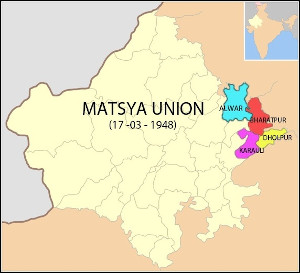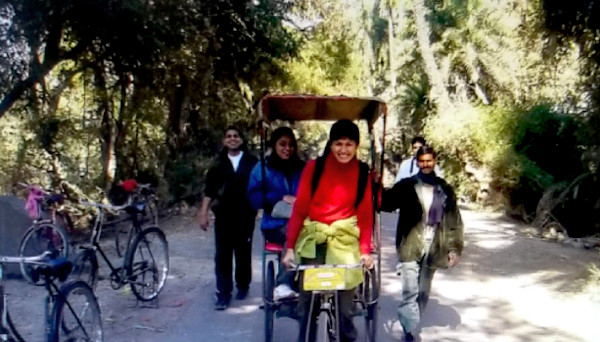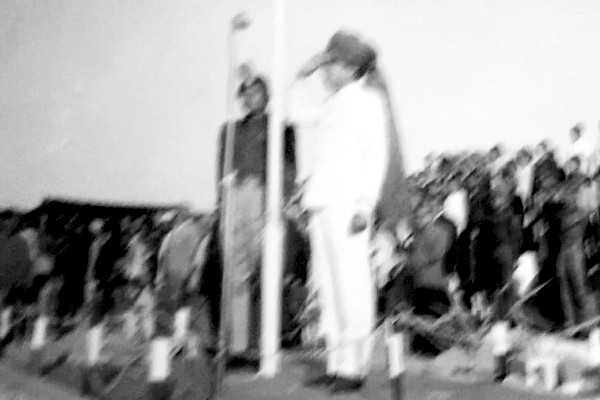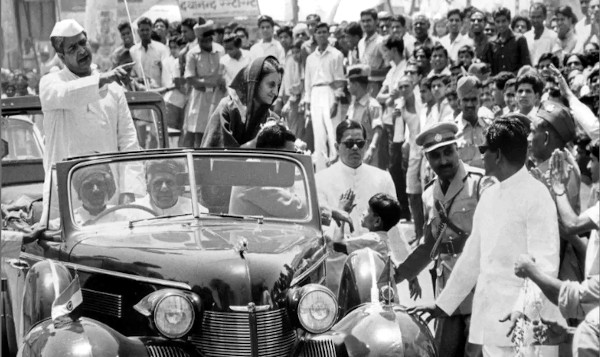Interface with and Interference by Political Masters

I. C. Srivastava was born in 1943. A student of English Literature, he joined the Indian Administrative Service in 1966. During his 37 year tenure, he served as Collector/ District Magistrate of three districts, rising to the position of Chairman, Board of Revenue, Rajasthan.
Shri Srivastava worked as Secretary/Principal Secretary of as many as 17 Rajasthan State Departments, including Revenue, Irrigation, Education, Culture, Tourism, Sports, and Women & Child Development Department. He retired as Chairman, Rajasthan State Mines and Minerals Corporation.
Shri Srivastava has authored several books on Administration & Current affairs in Hindi and English. Nowadays, he is associated with various social and cultural voluntary organisations in Jaipur.
Editor's Note: This is the second part of a series on life as an IAS officer by Shri I. C. Srivastava. Click here to read the first part, titled Memorable and Useful Experiences as an IAS officer.

Matsya Union
Bharatpur, one of the first three erstwhile states of Rajputana to join Matsya Union which merged with Greater Rajasthan had a chequered history of Jat warrior kings who plundered Delhi infrequently and joined Marathas in their campaigns against the Moghul rulers of Delhi in the eighteenth century.
In the nineteenth century, General Gerard Lake, Commander-in-Chief of the military in British India, could not defeat the hardy Jats and was nearly tired out by laying seize of Bharatpur for nearly 26 months before overwhelming them. Bharatpur people with a bee-in-bonnet nature always opposed their rulers for one reason or the other during feudal times, which habit sustained their protestations even after the formation of Rajasthan.

Herons at the Keoladeo Ghana National Park, formerly the Bharatpur Bird Sanctuary

Touring the Keoladeo Ghana National Park on a cycle rickshaw
The whining and growling of complainants against perceived administrative injustices, at times, turned into shouting bouts when faced with obdurate officers with a keen eye to see through their contrived complaint to get a patwari, an official agent of the government who maintained the village accounts, or LR Inspector transferred out of a Circle. A patwari, with his “Oopar kartar neeche patwar” image of daredevilry to manipulate records to the undoing of many, required joint public effort to oust him or to retain the favourable one.
If a patwari was suspended, farmers would approach the political cadre fellows or even Union Deputy Minister at Delhi, an MP from the district to throw weight for his reinstatement. One such case cropped up on Land Records Section File, of which SDO Sadar (headquarters) was officer-in-charge. A strip of paper pinned on a file contained the Minister’s desire as endorsed by the Collector. The wily LR Assistant dropped no hints to the new SDO or ‘Chhote’ Collector as I came to be called later on.
With prying eyes he gauged my temper and temperament. I asked him to explain. He suggested that I should better discuss the matter with the Collector who would clarify everything. Collector without mincing words politely asked me to prepare a note for reinstating the Patwari against whom a preliminary enquiry was already under way on the basis of serious allegations and charges.
In sheer desperation, I told the Collector, “How is it possible to justify reinstatement?” He calmly stated, “You can suspend him again after a fortnight. After all, he is your subordinate but for once let the Minister’s desire be carried out.” I remained unconvinced. I sent up the file with factual position. Even so, Collector reinstated the Patwari.
Thereafter, the Collector never asked to me to do something similar to this. Nonetheless, he would transfer Patwaris frequently, mostly at the request or desire of politicians who always took sides resulting in cancellation of transfer orders being issued more than once in the case of the same notorious Patwari. My pleadings more often failed. But I was satisfied that I could keep myself above board.
Here is another instance of a political desire, in this case, by the then Revenue Minister who conveyed on phone that a particular Patwari should be transferred to an indicated place when I was functioning as Collector, Barmer.

Shri I. C. Srivastava taking the salute on Independence Day as Collector, Barmer.
On my submission that I would check back facts and speak to him, he thundered, “When Revenue Minister speaks, it is a government order,” to which I submitted ‘Yes, sir’.
Eventually, I looked into the facts and did what was desirable and certainly not the ‘desired’ posting indicated by the Minister. Needless to add, he never phoned me again and surprisingly became an ardent supporter of my administrative style of functioning which resulted into a bonhomie between us during Indo-Pak war of December 1971 when he announced himself as Commander-in-Chief of Civilian Forces in the desert districts of Barmer and Jaisalmer. He gave full support to our war effort.
Later on, when I was posted as Director, Rehabilitation of Kadana and Mahi Projects at Banswara, I had several opportunities to interact with him. He had the courage of conviction also to praise the Chief Minister Shri Harideo Joshi in his face for posting me as a Deputy Secretary, GAD & Cabinet during the infamous emergency in July 1975.
A tribute to Shri M L Sukhadia
Memories of interface with political leaders and powers that be crowd into the 'mind’s eye'. But some incidents and anecdotes can be recalled vividly, being sharply etched in memory. A great leader and Chief Minister, Rajasthan for 17 long years, Shri M.L. Sukhadia left an indelible impression on my personality with his inimitable candour in conduct, vision for future, insight into the ground realities and need of the hour.
A few months into my first assignment as Collector and District Magistrate of Barmer district early in 1971, before he resigned to make way for Shri Barkatullah Khan, Shri Sukhadia came to inaugurate Talwara Cattle Fair near Balotra Sub-divisional headquarters. After receiving him on the outskirts of the town, we escorted him to Dak Bungalow from where he proceeded directly to the fair ground.
I was taken aback when he beckoned to me to come close to him immediately after alighting from the car. Looking into my eyes, he asked a simple question, “Collector Sahib, Aap ko mujhse alag se kuch kehna hai? Sab theek hai”. “Yes, Sir, everything is all right. I joined here two months back and am still studying the problems of the district.” He called the then SP Shri Dulhe Singh and asked him the same question which he had asked me, followed by another query, “Aap dono ko kuch saath me kehna hai?” Formalities over, he proceeded with graceful gait and joined the waiting crowd of Pradhan, members of Panchayat Samiti and the irrepressible lady MLA Mrs. Madan Kaur.
It was obvious to me that Shri Sukhadia was a true leader of people and knew their moods and needs too closely free from any doubt or narrow and grooved thinking. He seated the Pradhan of Panchayat Samiti on his right side along with members (he knew too well how and when to keep appropriate people on the right side) and the local MLA and other leaders on his left.
He addressed the gathered crowd with aplomb, grace and dignity par excellence. People nodded and responded with measured clapping. As it was the pre-election period of Parliamentary elections due in March 1971 (later postponed to April 1971), Shri Sukhadia proceeded to Siwana and did not pick me up as was his wont to take Collector in his car for a discussion about the district’s problems on way.

Indira Gandhi with Rajasthan Chief Minister M L Sukhadia
Probably, seventeen long years as CM had given him enough feedback and food for thought leaving little scope for a newly arrived officer like me to brief him further. Addressing some meetings on way, he arrived late in afternoon at Siwana and went for a brisk walk in the big courtyard behind the Dak Bungalow.
After a cup of tea, he went to address the big election meeting organized on the crossing right opposite tehsil office and Dak Bungalow. Surprisingly, he made the Sarpanch of Siwana, sit with him. Siwana, though a tehsil headquarter had not graduated to an urban status. Here, he had forgot all about us who waited in the wings of the Dak Bungalow literally as protocol required and maintained our civil service neutrality from a safe distance.
Shri Sukhadia’s grace and greatness blended well with his essential humility when he came to visit Barmer in the month following his resignation as CM, in a black party car without the grandiose of security and frills of power. He was required to supervise civil defence arrangements along with Shri Mathura Das. Mathur, his erstwhile Finance Minister who was declared Secretary General, Civil Defence Council, Government of India. Needless to add, his visit boosted the morale of people before the impending war which loomed large on the horizon. However, he was all humility when we went to call on him at the Dak Bungalow. He was visibly pleased as we had gone to see him on our own out of sheer courtesy without any hint or call from him or his local followers and party cadre.
A tall leader and a great personae who overshadowed all state leaders for a long time richly deserves a sharply etched, unique niche in the history of Rajasthan for his visionary zeal and astute management of politics. His famous smile and cool composure helped him win over multitudes of common people who reposed full faith in his stewardship of the state’s affairs. The industrialization of the state received a great fillip during his tenure besides all round development under a stable government. Kota was declared the first industrial town of the state which slowly and steadily also developed as a tourist destination under his able leadership.
Editor's Note: The third part of a series on life as an IAS officer is here.
Add new comment